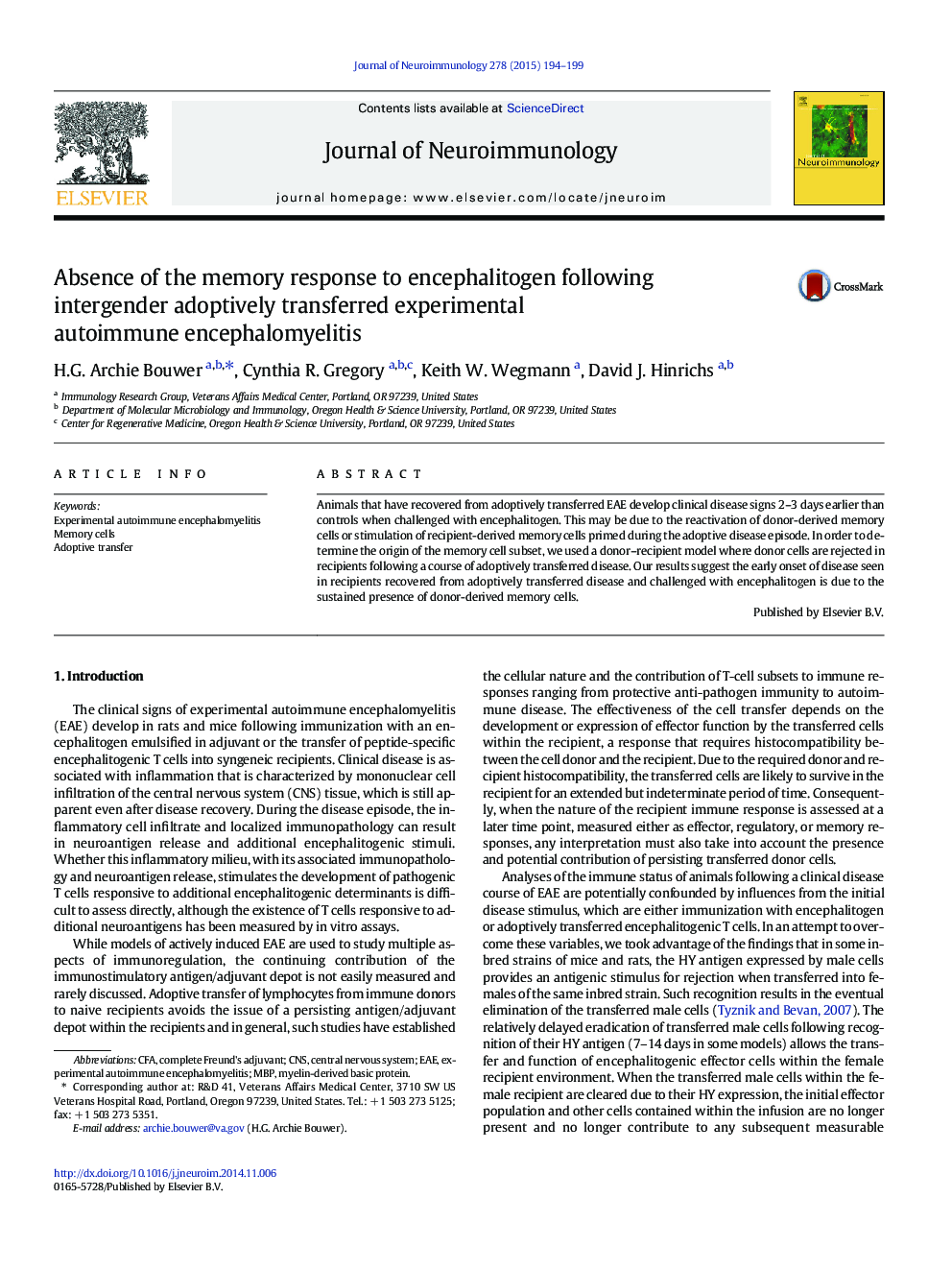| Article ID | Journal | Published Year | Pages | File Type |
|---|---|---|---|---|
| 6020333 | Journal of Neuroimmunology | 2015 | 6 Pages |
Abstract
Animals that have recovered from adoptively transferred EAE develop clinical disease signs 2-3Â days earlier than controls when challenged with encephalitogen. This may be due to the reactivation of donor-derived memory cells or stimulation of recipient-derived memory cells primed during the adoptive disease episode. In order to determine the origin of the memory cell subset, we used a donor-recipient model where donor cells are rejected in recipients following a course of adoptively transferred disease. Our results suggest the early onset of disease seen in recipients recovered from adoptively transferred disease and challenged with encephalitogen is due to the sustained presence of donor-derived memory cells.
Keywords
Related Topics
Life Sciences
Immunology and Microbiology
Immunology
Authors
H.G. Archie Bouwer, Cynthia R. Gregory, Keith W. Wegmann, David J. Hinrichs,
